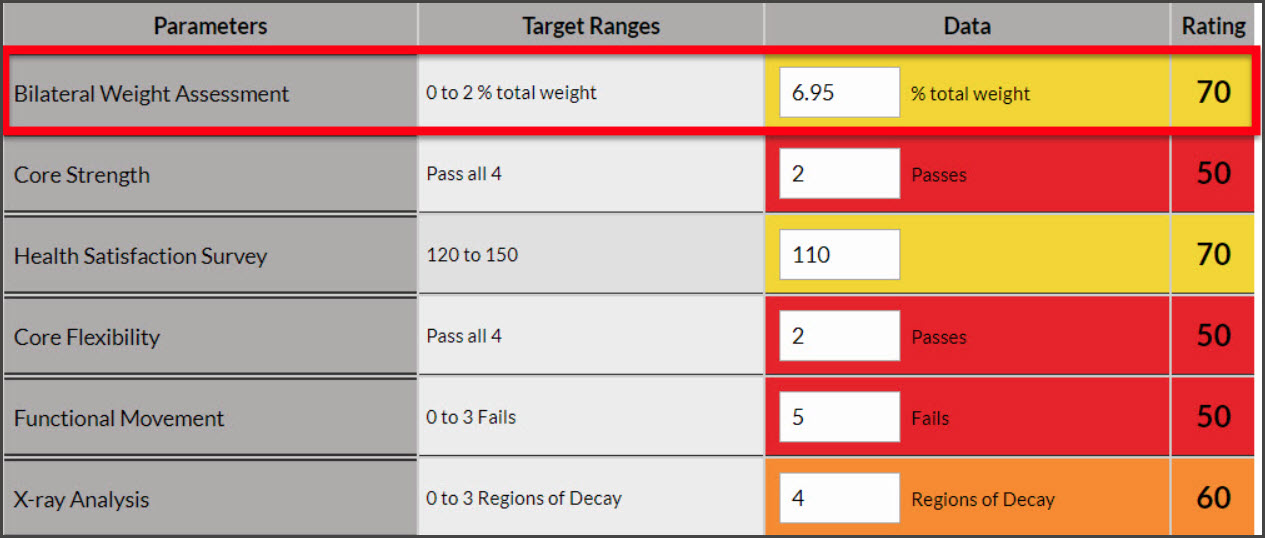Background
Bilateral Weight Scales are an objective way to demonstrate postural imbalances.
The postural imbalance caused by abnormal weight distribution in the body may cause discomfort, pain, and deformity. In the human 
How to Use Bilateral Weight Assessment [Bilateral Weight Asymmetry] With The Wellness Score®
Bilateral Weight Assessment [Bilateral Weight Asymmetry]
This parameter measures postural imbalances that show up as a % of how much weight the patient is carrying on one side of their body compared to the other using a bilateral weight scale.
Here is an example of a bilateral weight scale sold by Chiro Design Group:
How to Perform With Your Patient:
- With their eyes closed, have the test subject tilt their head up and down, and then left and right, settling to a comfortable, neutral position while standing on the scale.
- Record the scale readings for each leg. To eliminate the variance between the scales, reverse their positions and repeat the test.
- Average the findings of the left leg by adding both left leg readings and dividing by two.
- Average the results for the right leg by adding both readings and dividing by two.
Scale 1 results minus Scale 2 results divided the patient's total weight multiplied by 100 = the % percentage you'll enter into the exam set.
Example:
Total Weight: 187
Scale 1: 100
Scale 2: 87
(100-87=13)
13 divided by the total weight of 187=0.069
0.069 x 100= 6.95
6.95 is the % entered into the data table.


